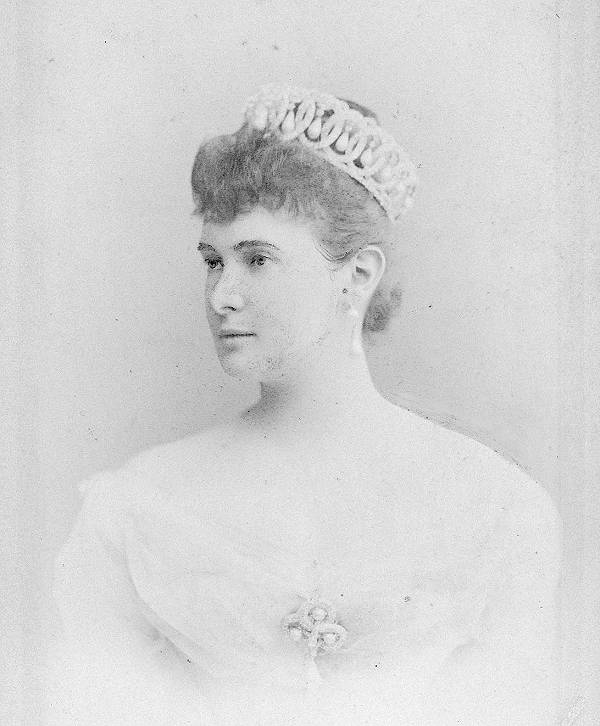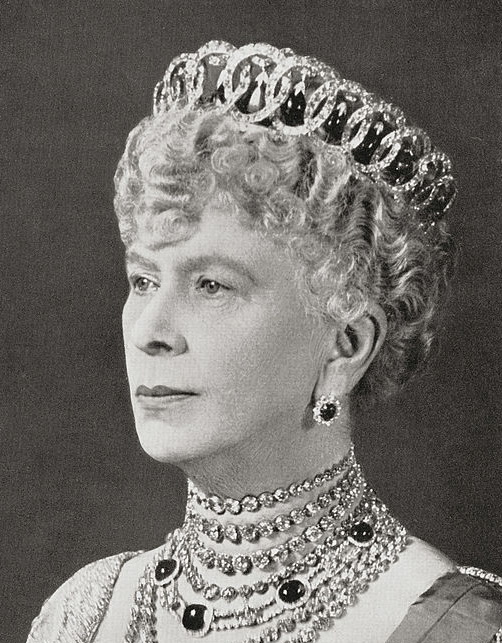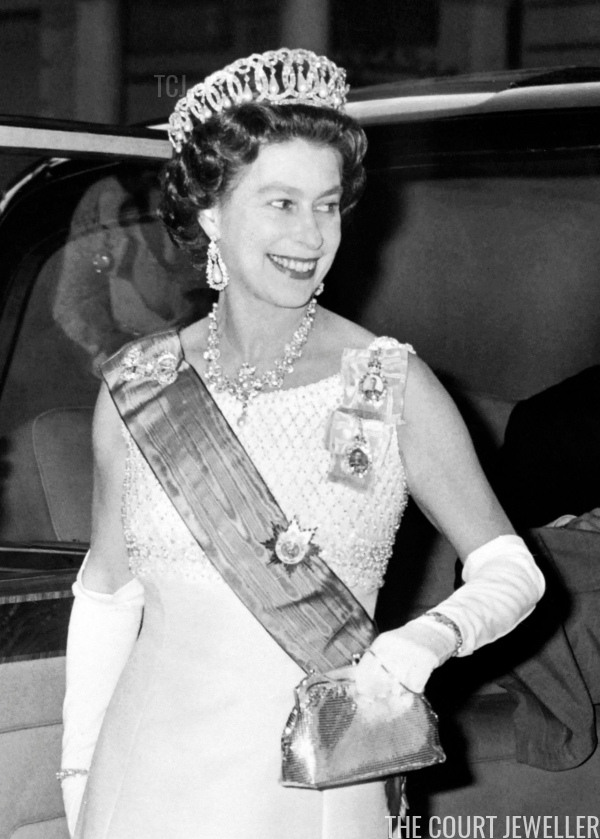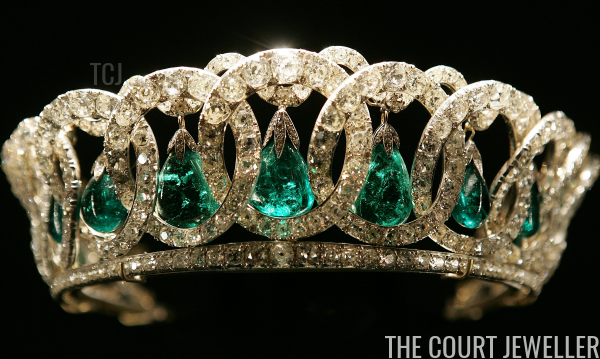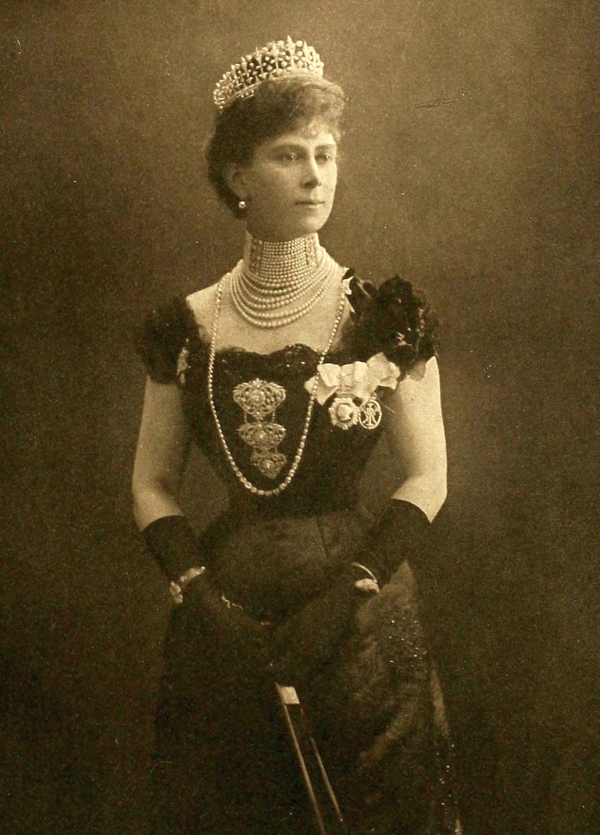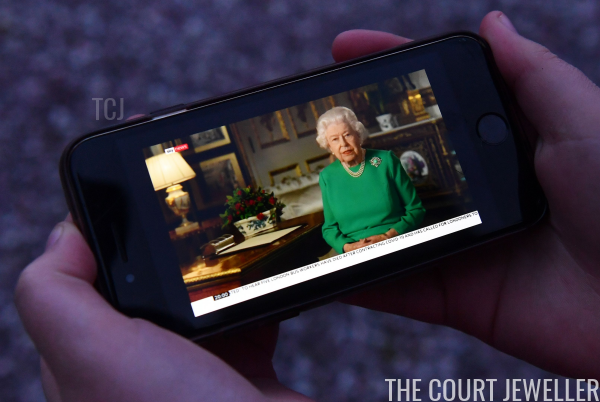 |
| PAUL ELLIS/AFP via Getty Images |
When regular television programming gave way to a message from Her Majesty the Queen on Sunday, Elizabeth II appeared on screens across the globe. In a video that had been filmed a few days earlier, she sat in the White Drawing Room at Windsor Castle and delivered a message of support and reassurance in the face of global crisis. With only one other person in the room – a camera operator who was dressed in full protective gear – she spoke with measured strength, recalling her wartime childhood and encouraging people around the world that they, like the people of the 1940s, would indeed meet again.
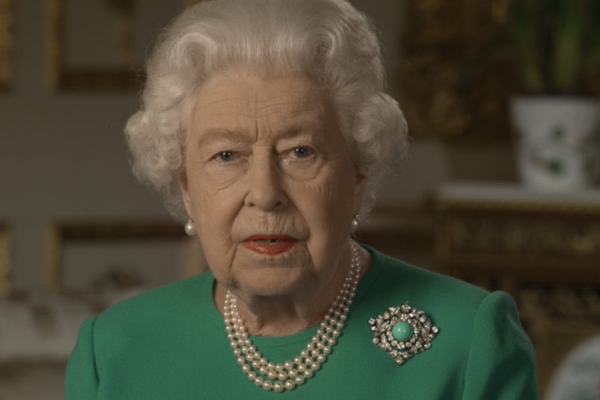 |
| A still from the Queen’s message |
Predictably, even before the broadcast had ended, my inbox was full of questions about the brooch that the Queen had worn. I wasn’t sure I wanted to devote much time to the jewelry at all: the speech had moved me on a personal level, and I was processing my own emotional reactions to it. Ultimately, I wrote a few lines on my Twitter account, and thought about leaving it at that.
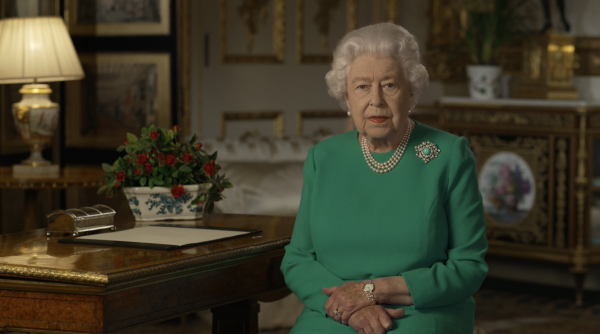 |
| A still from the Queen’s message |
Meanwhile, I watched as lots of other “takes” on the brooch rolled in from web publications big and small. Since the days of the “brooch warfare” silliness that overtook social media a few years ago, there’s been an increasing interest in articles about the “secrets” being told by the Queen’s jewelry, especially her brooches and tiaras. Writers spun up a whole lot of content about this one. They’ve scrutinized the symbolic meanings of turquoise, arguing that the Queen wore the stone because of its “healing” properties. They’ve attempted to make a link between the brooch and the tiara worn by the Duchess of Sussex on her wedding day. (Seriously — because both were owned by Queen Mary. That’s the only link.) And, in perhaps my favorite outlandish reach, one writer even argued that the Queen wore the brooch because Queen Mary’s first fiancé, the Duke of Clarence, died of influenza. Why in the world would the Queen have wanted us to think about that family tragedy in these times?
Now that the click-bait noise has settled a bit, here’s the truth about this particular brooch on this particular occasion: even more than normal, there aren’t any “secret” messages here.
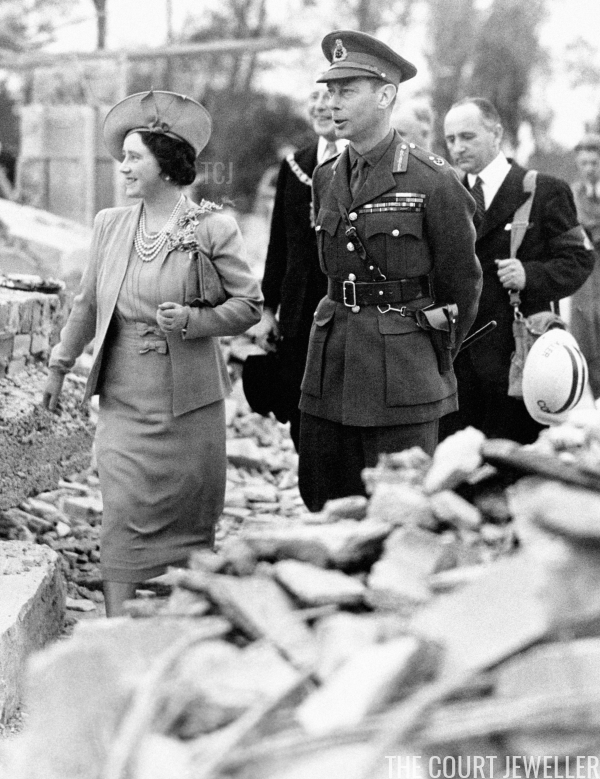 |
| King George VI and Queen Elizabeth visit bombed neighborhoods in London during the Blitz, September 1940 (PA Images/Alamy) |
The British royal family has a longstanding tradition of meeting adversity head-on – and in pearls. The Queen Mother famously dressed in her best clothes and jewelry to visit survivors of London bombings during the Blitz, reasoning that they would do the same for her if they visited her home. Her attire became both a sign of normalcy and a gesture of respect. Her official biographer, William Shawcross, described her wartime fashion strategy as “gentle ostentation,” intended to respectfully encourage and brighten the days of those she visited in houses, factories, and barracks. It should come as no surprise, then, that the present Queen followed in her mother’s sartorial footsteps when she visited all of our homes a few days ago. The presence of her pearls and her brooch were a reassuring sign that life was and would be continuing on, no matter how strange it feels at the present moment.
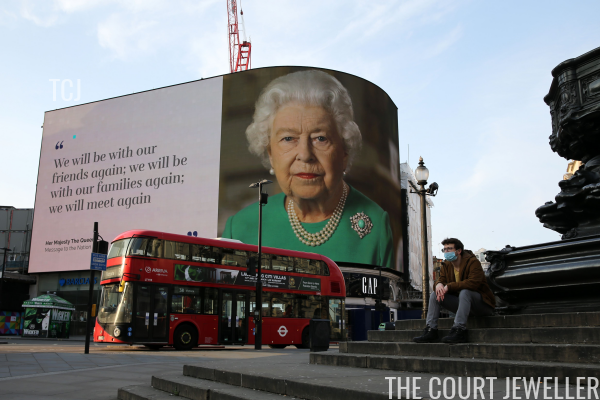 |
| ISABEL INFANTES/AFP via Getty Images |
But the Queen and her dresser, Angela Kelly, were keenly aware that any extra attention on her jewelry and clothing during the speech could take the focus away from the most important aspect of the broadcast: her words. Shortly after the speech concluded on the BBC, Roya Nikkhah, royal correspondent for the Sunday Times, told James Reynolds that the palace had made the deliberate decision not to release photographs or stills from the broadcast ahead of time. This was a break from normal practice: for example, photos are generally released a day or two ahead of the Queen’s annual Christmas Message, in large part to give the press images to illustrate their content about the speech. The reason for a different strategy this time was simple: the palace didn’t want the media to dwell on the details of her clothing or jewelry at a time when the content of the speech itself was so important.
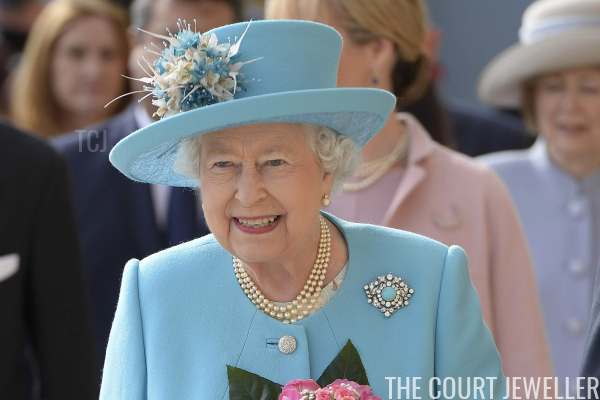 |
| The Queen wears the brooch in Malta in November 2015 (Toby Melville – Pool/Getty Images) |
The choice of jewel, I expect, was part of the strategy of “gentle ostentation.” The brooch itself was not a piece with immediate familiarity to most viewers. The jewel is a family heirloom – it was a wedding gift from King Edward VII and Queen Alexandra to Queen Mary in 1893 – but Queen Elizabeth II only began wearing it in public six years ago. Unlike many of her more familiar brooches, this one doesn’t immediately call to mind another royal wearer or occasion. It belonged to Queen Mary, yes – but so did an enormous part of the present Queen’s jewelry collection. The Queen wore a brooch for the speech because the Queen wears brooches: they’re part of her familiar daytime uniform for public engagements. But neither she nor the palace staff intended that we should spend time ferreting out secret messages from the jewelry. The message was clear: it was the speech itself. The brooch was merely comfortingly normal decoration.
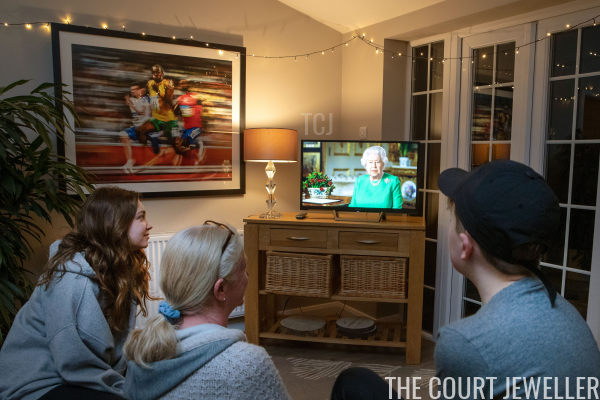 |
| ADRIAN DENNIS/AFP via Getty Images |
The diamond and turquoise brooch is not a piece of jewelry that makes us mentally jump to another place and time. It’s not a jewel that makes us recall other royals from other generations. It’s not a piece that makes a diplomatic nod to a guest. Instead, it’s simply part of a familiar, reassuring, normal background in an incredibly unfamiliar situation. Like her mother did during the war, the Queen took time to make a special visit to our homes, wearing pearls and a beautiful brooch, and assured us that things are, indeed, going to be okay.

